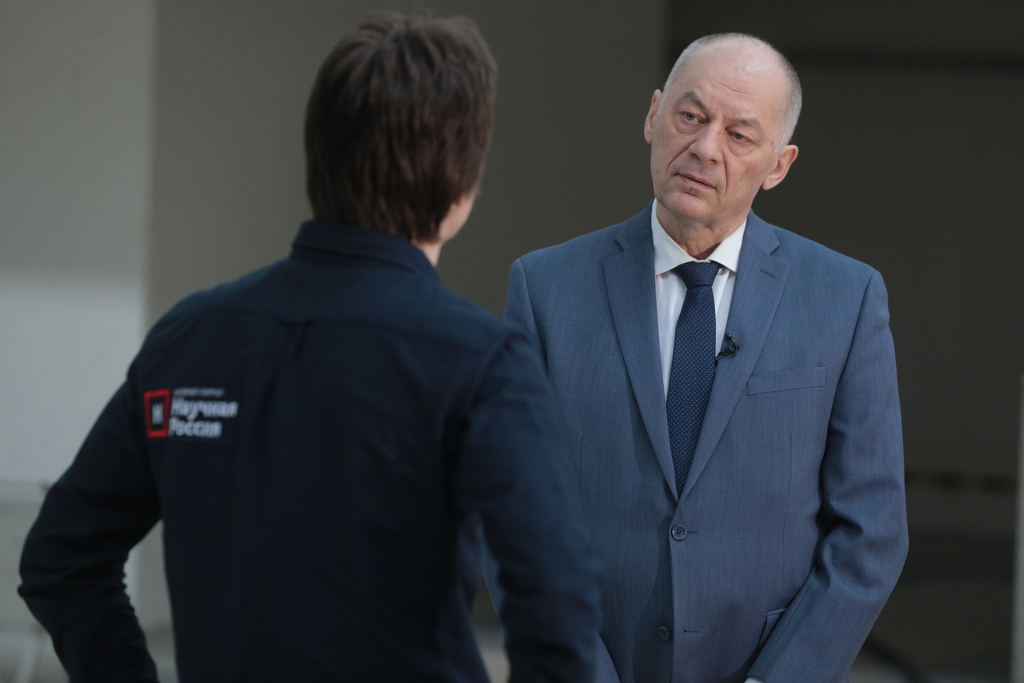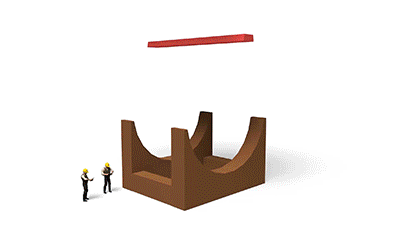“Intelligent Magnet”: Vladimir Kekelidze explains the role of the NICA project for international cooperation.
Interview, 29 March 2021
We present an interview with JINR Vice-Director Corresponding Member of the Russian Academy of Sciences Vladimir Kekelidze, published by the popular scientific e-journal “Scientific Russia” for the 65th anniversary of JINR. The anniversary series also includes an interview with JINR Scientific Leader RAS Academician Victor Matveev, published on 25 March, and an interview with JINR Director RAS Academician Grigory Trubnikov, published on 27 March.
 Vladimir Dimitrievich Kekelidze, Corresponding Member of the Russian Academy of Sciences, Acting JINR Vice-Director for the NICA mega-science project. Photo: Nikolay Malakhin
Vladimir Dimitrievich Kekelidze, Corresponding Member of the Russian Academy of Sciences, Acting JINR Vice-Director for the NICA mega-science project. Photo: Nikolay Malakhin
We keep working on the Multi-Purpose Detector, or MPD for short, at the Joint Institute for Nuclear Research in Dubna. In the yellow sarcophagus remains an important element of the future detector – the coil of a superconducting solenoid magnet. It was delivered from Italy at the end of last year, and now Dubna scientists are waiting for manufacturer’s specialists to conduct testing before installing it in the magnetic core.
And directly at the site where the detector will later be located, a magnetic yoke is now assembled, i.e. a kind of a metal cover in which the coil will be placed. Rails have also been prepared for moving and accurate setting of the MPD, in relation to which the particles will collide.
During the 65th anniversary year of the Institute , Project Leader Vladimir Kekelidze presented the NICA project within the context of international cooperation.
 MPD layout. An image from the NICA project website
MPD layout. An image from the NICA project website
– At the time the Institute was founded, 65 years ago, could scientists imagine that such a large-scale project would be developed at this site?
– A year after the Institute was founded, the famous Synchrophasotron was launched. It was already being prepared at this site, in the neighbouring building. Right where the Booster has recently been launched. It was the greatest success of Soviet and world science, because for the first time energy of 10 gigaelectronvolts was achieved. Nobody had achieved such a result in the world, and we were the leaders in accelerator technology. 65 years ago, we already enjoyed a solid reputation, and world science paid tribute to the successes of the Institute and the laboratories.
There was a difficult period in the 1990s. Now the Institute is reviving, it is on a big upswing. Major flagship projects at the Institute, such as NICA, the Superheavy Element Factory, and the Baikal telescope, led to this. There is a number of other projects slightly smaller in scale.
– Now, when thinking of the Joint Institute for Nuclear Research one also thinks of the NICA project. What does this say about the Institute?
– We are at a fairly high global level. The scientific problems that will be solved here cannot be solved at any other facility in the world. Only by creating such facilities, which solve unique problems, which are leaders, we can attract a large international group of brilliant, talented physicists.
Without a team like this, you can’t solve such problems, which is why we’re not just building a facility. It’s an intellectual magnet that will gather the best minds from around the world who want to solve this ambitious task together with us. These minds are already gathering: we have three installations around which international collaborations are being organized.
There are already more than 500 participants from 11 countries and more than 40 scientific centres around the MPD facility. The second facility is smaller and has already been launched, and scientific data are being collected there. It’s called Baryonic Matter at the Nuclotron (BM@N) with over 250 participants from 10 countries and 20 research centres. And the third facility, which will be at another interaction point of collider beams, is the Spin Physics Detector, SPD. A completely different issue will be solved at the detector, and physics will be totally different. This collaboration has not yet been formed; there are no regulatory bodies, but over 300 scientists have already applied. In total, we are expecting more than 2,000 scientists working at these three facilities.
– Are such projects, as they are also called “megaprojects”, a certain status for the host country?
– They are called “Megaprojects” because they are several separate projects. Each of these installations is a project. It is a series of projects combined into a single task. It implies an international status, a large international team of project participants. All of this as a whole is a megaproject.
To start such a project, it is necessary to have much than just an idea. It is necessary to have very profound expertise. Before spending such human and financial resources, you have to calculate that the tasks are worth it. This is why, before our project got the green light, it passed not only domestic but also international expertise. The project was presented at dozens of the most prestigious international conferences, and the Russian government even organized such expertise through representatives of major European centres to get an assessment of what we are doing.
The European Commission, having considered our project, included the NICA complex as an element of the European research infrastructure. This is important because European scientists can apply for grants from the European Union in order to participate in our research.
This year, the 65th anniversary of the Institute coincides with the Year of Science and Technology. What projects related to the NICA project are being prepared?
– One of the NICA projects included in the Year of Science and Technology is the integration of the Booster into the accelerator complex system and carrying the beam to the existing facility. An international team of scientists is working on it. It is expected at the end of December.